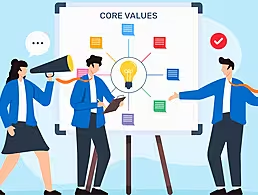DEI measures are there to ensure fair and equal treatment for everyone within the workforce, yet age is often unfairly seen as a sign that someone is unfit for the modern workplace.
Undoubtedly, the world is an extraordinarily different place compared to when the baby boomers, and even those in generation X, first entered the workforce. Technologies have taken leaps and bounds as we progress through the fourth industrial revolution, which will be defined by AI, quantum computing and advanced robotics, to name a few.
It isn’t unreasonable to point out that a large section of the workforce will have to significantly upskill to meet the demands of a working environment that is in the throes of mass transformation. But for Cameron Lindsay, the CEO of software development company Haystack, the preconception that older members of the workforce are inept or incapable of learning about new technologies is harmful and inaccurate.
“This assumes a stereotype that older people don’t understand technology or uniquely struggle with it, which I don’t subscribe to,” he told SiliconRepublic.com. “Some workplace technologies can help all employees cut through the noise of tech stacks and isolated tools to get more done. AI is definitely showing itself as one of those technologies.”
The issue of ageism targeting older employees is certainly not new, case in point a 2023 Workplace Equality Report from Matrix Recruitment Group, which indicated – for the second year in a row – that 78pc of respondents identified ageism as a significant workplace issue.
More than two-thirds of people surveyed stated that employees over 50 have less opportunities than their younger co-workers, despite 89pc of respondents agreeing that people in the 50 years and up age group have just as much to offer as their younger counterparts. The survey also indicated that older employees are valued for their life skills, mentorship capabilities and reliability.
For Lindsay, the cut-off point at which one could be considered older is somewhat arbitrary as, if the line does exist, it still varies greatly from sector to sector and career to career, particularly as people seem to be working for longer into their lives. This has led to a workforce composed of individuals who potentially span seven or eight decades.
“I’m not convinced the generational divide is increasingly evident compared to years past, but I am seeing a lot more divisive rhetoric lately. That’s concerning because there’s a greater representation of age ranges in the workforce now, and we all have a lot to learn from one another,” he explained.
Bridging the generational divide
According to Lindsay, the companies that don’t invest time or energy in bridging the generational divide, to the extent that older employees feel devalued, miss out on opportunities to share knowledge that would drive an organisation forward.
Moreover, it is worth noting that ageism is not just directed at older employees, younger co-workers often bear the brunt of criticism centred around a perceived lack of experience or skill. The consequences can be significant, with research showing that working environments that don’t acknowledge or deal with ageism of all kinds risk poor staff retention, job dissatisfaction, or even legal repercussions if a resolution can not be found.
Lindsay is reminded of the Mark Twain quote, “History doesn’t repeat itself, but it often rhymes”, noting a veteran machinist uses special tools or methods to help get through repetitive tasks quickly and efficiently, in much the same way that a software engineer establishes their own style of operating.
“That kind of knowledge is priceless and losing it is tragic. Having not only the will, but an effective means of sharing it, is essential,” he said.
“I think, depending on when you grew up, the prevalent workplace technologies at the time will be most familiar to you, but that’s not unique to older generations. The incoming generation of workers are derided in popular business publications for their lack of typing skills, for example.
“The critical step forward is when technological advancements in workplace technology make work more intuitive for everyone. AI and large language models offer a unique possibility for that.”
Technology is often cited as a vehicle for progress and certainly, for Lindsay, it has the potential to encourage collaboration amongst people of all ages and skill level within the workforce.
Great potential
According to Lindsay, intuitive, conversational AI has the potential to positively impact working life, for anyone who may want to gradually introduce advanced technologies into their routine.
“This can really peel back a lot of the superfluous steps or tools people need to use in order to access resources or get complex work done,” he explained.
“Instead of digging through documentation, you could just ask ‘what’s our retirement plan’s match policy?’, ‘who should I ask about corporate governance?’, or ‘how do I print documents?’ and get a coherent, summarised response.” Additionally, he is excited for the continued and increased use of AI to reduce systemic hiring bias, which has been known to disproportionately affect diverse groups.
Ultimately, we are at the cusp of AI innovation and its potential to improve working conditions for people who may often be left on the margins of company culture. For Lindsay, we all have a shared responsibility to ensure that the outcome is a positive one.
Don’t miss out on the knowledge you need to succeed. Sign up for the Daily Brief, Silicon Republic’s digest of need-to-know sci-tech news.




